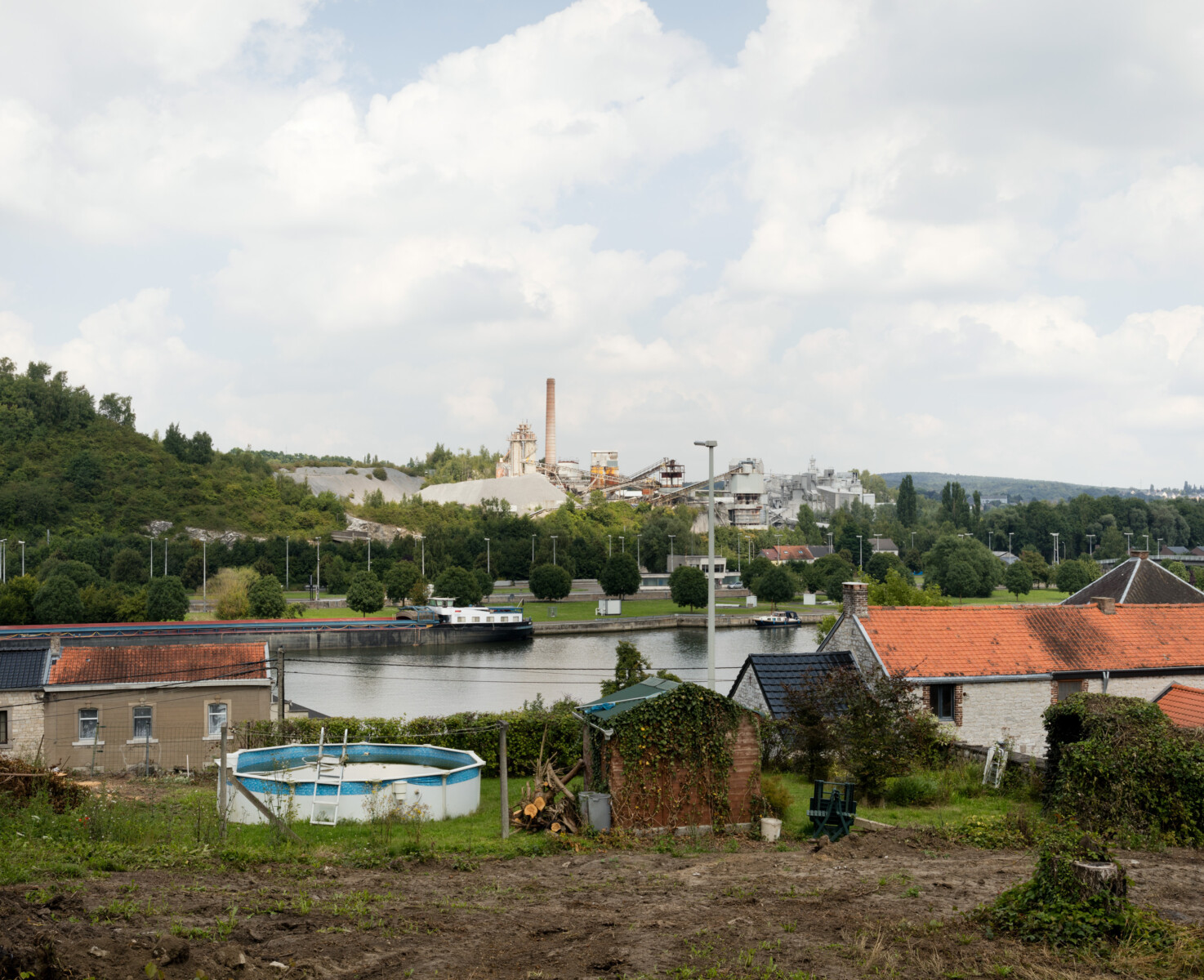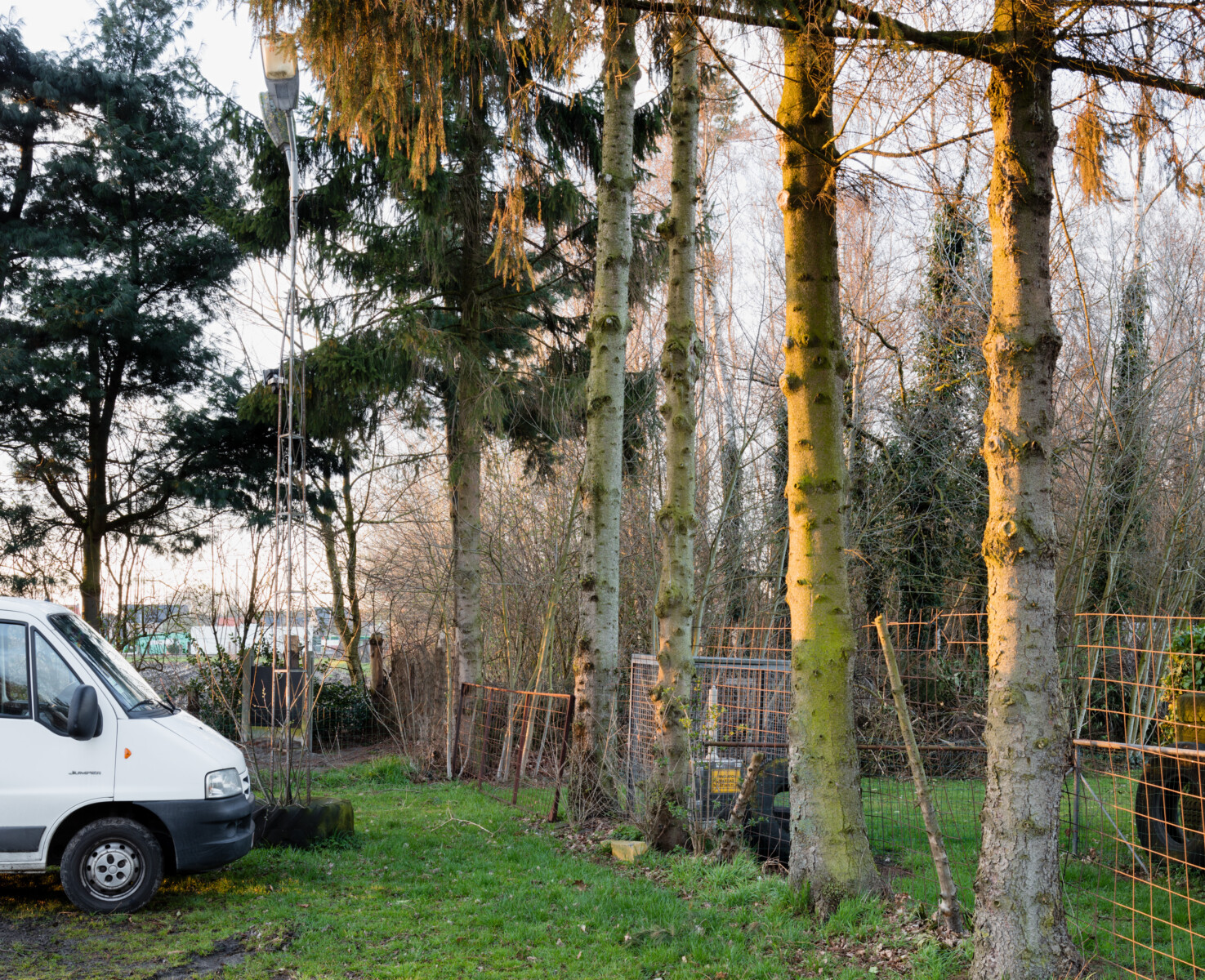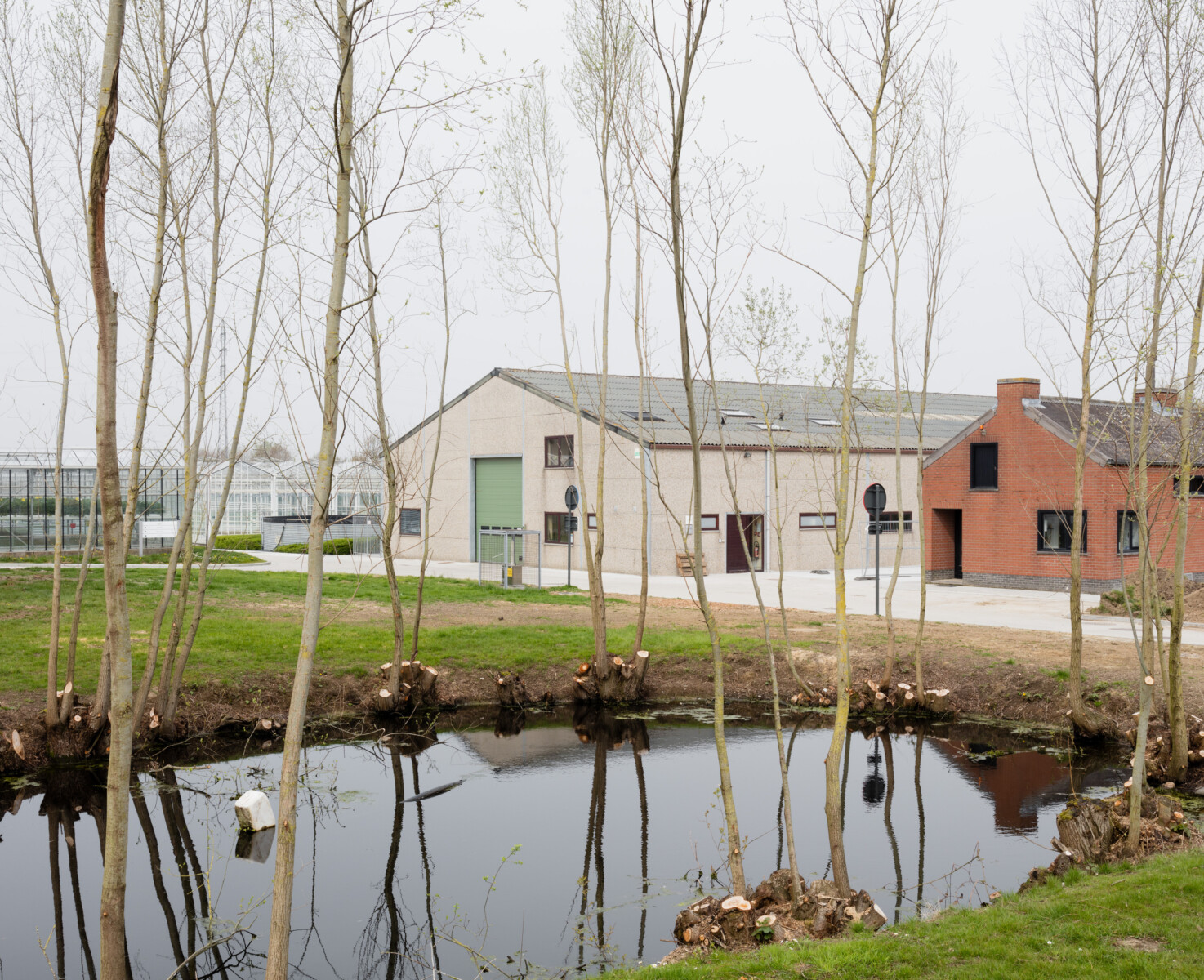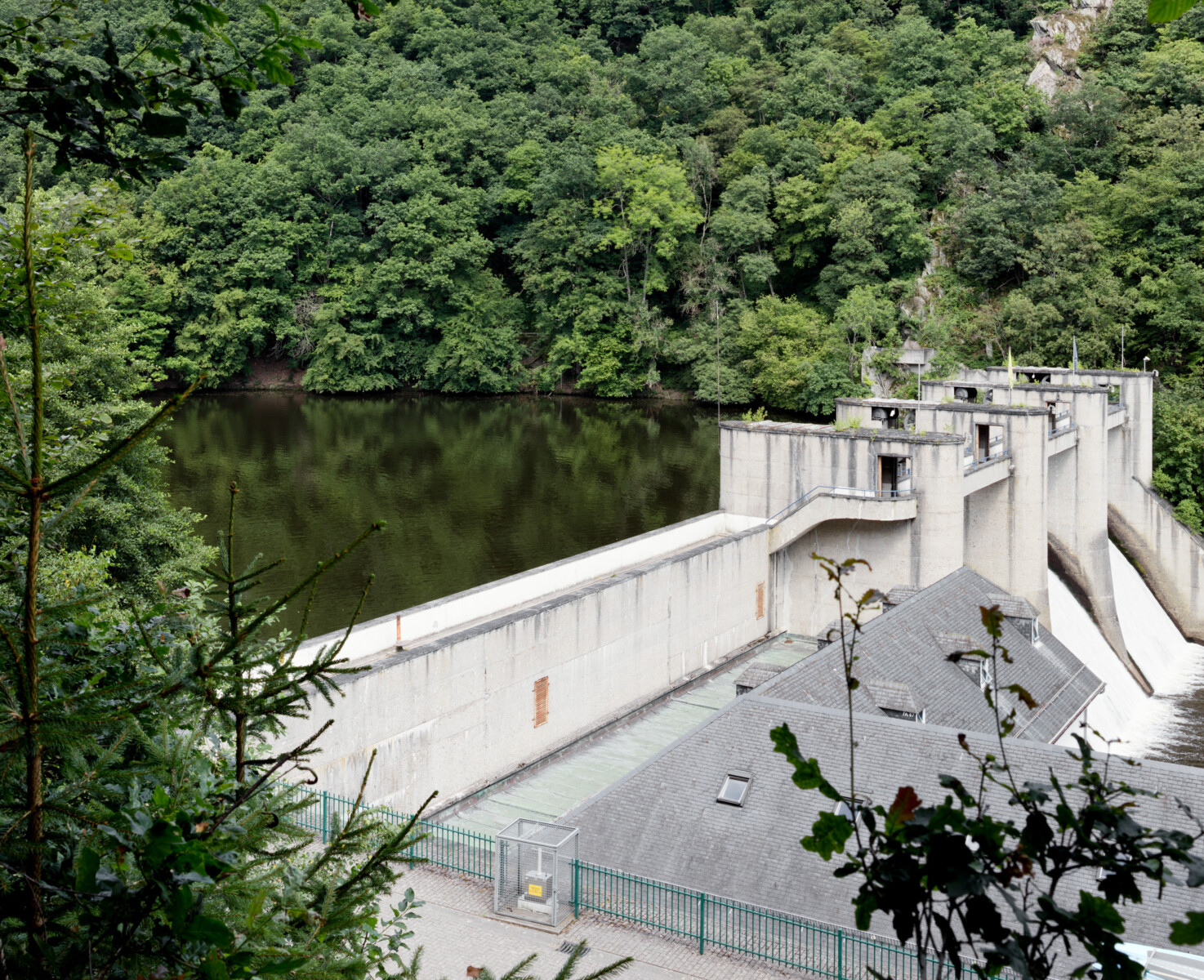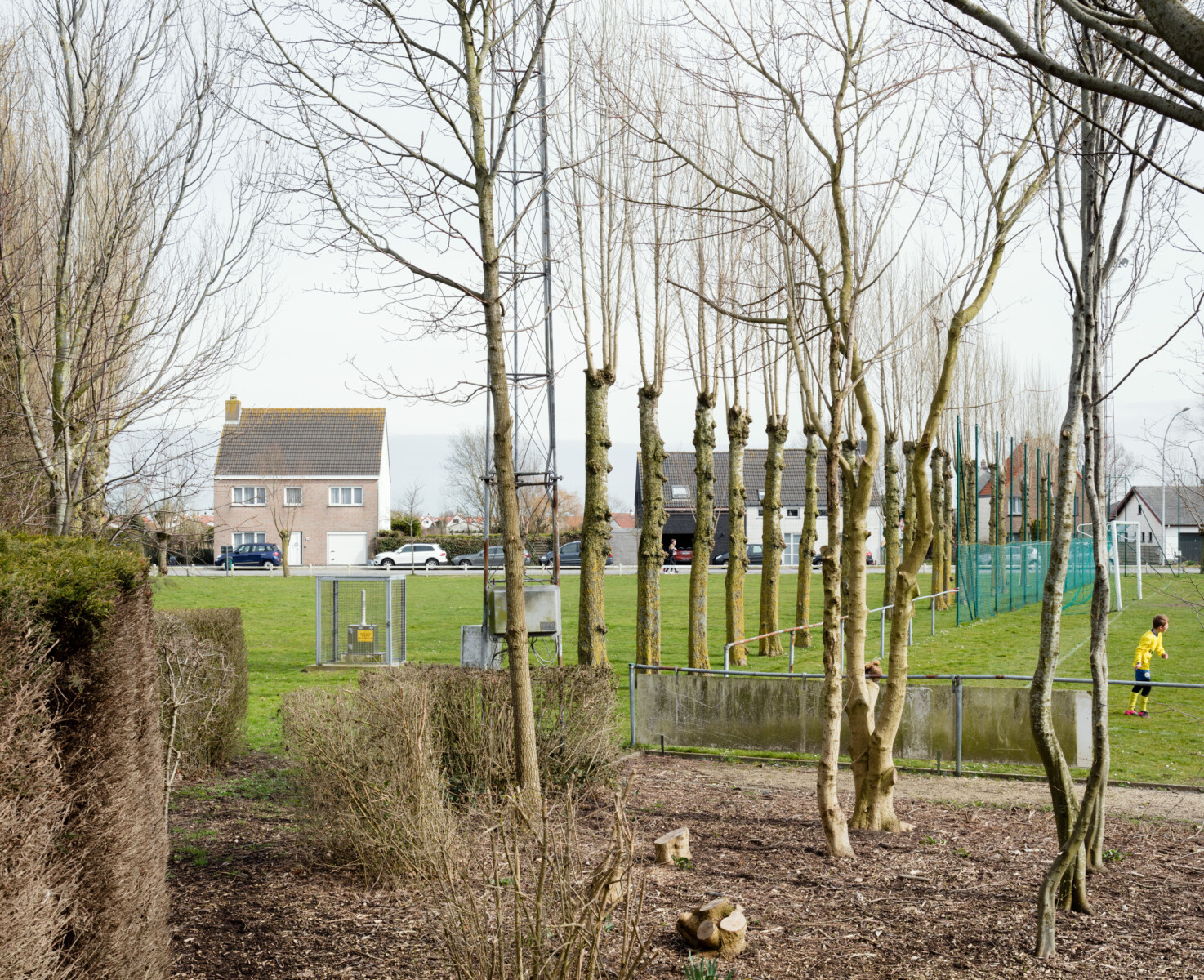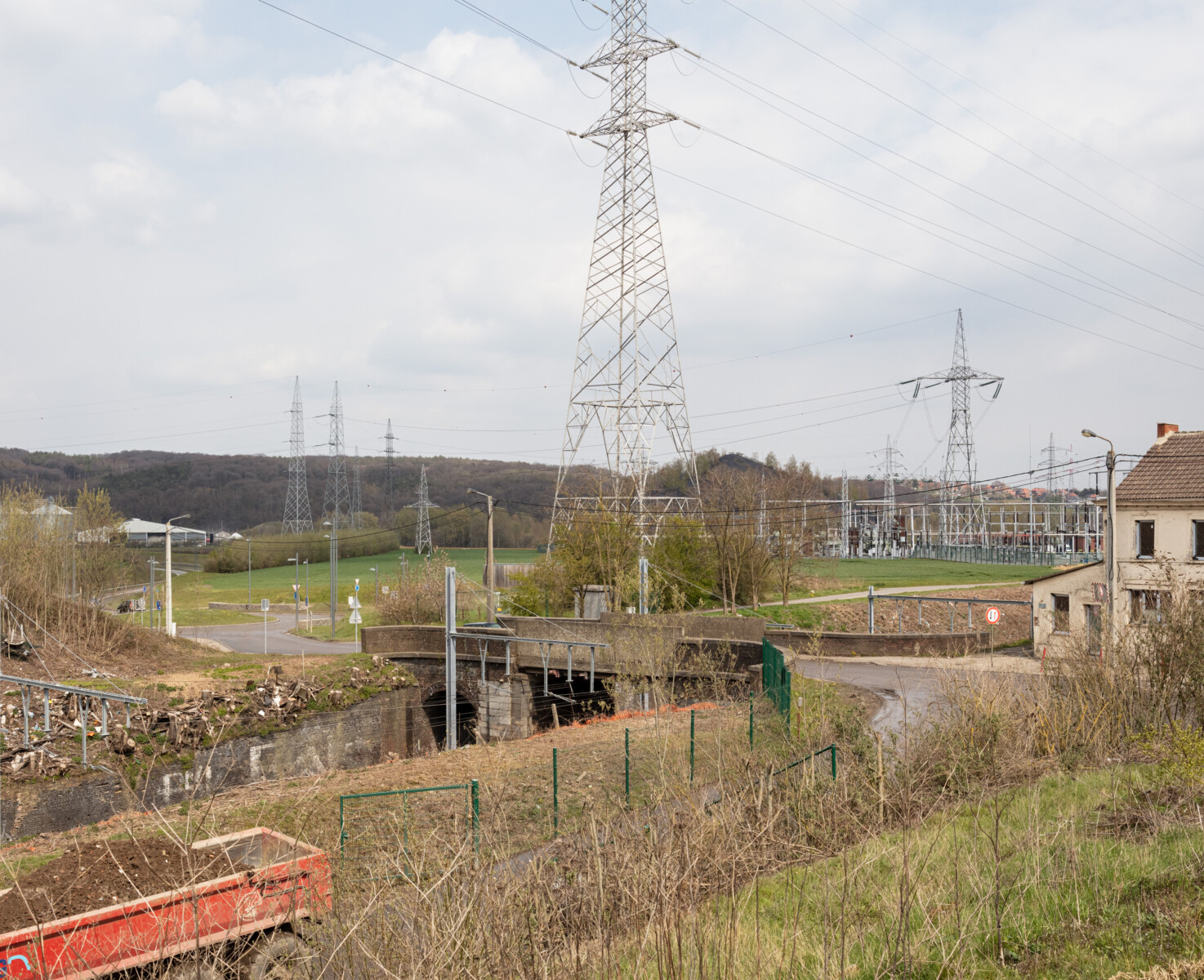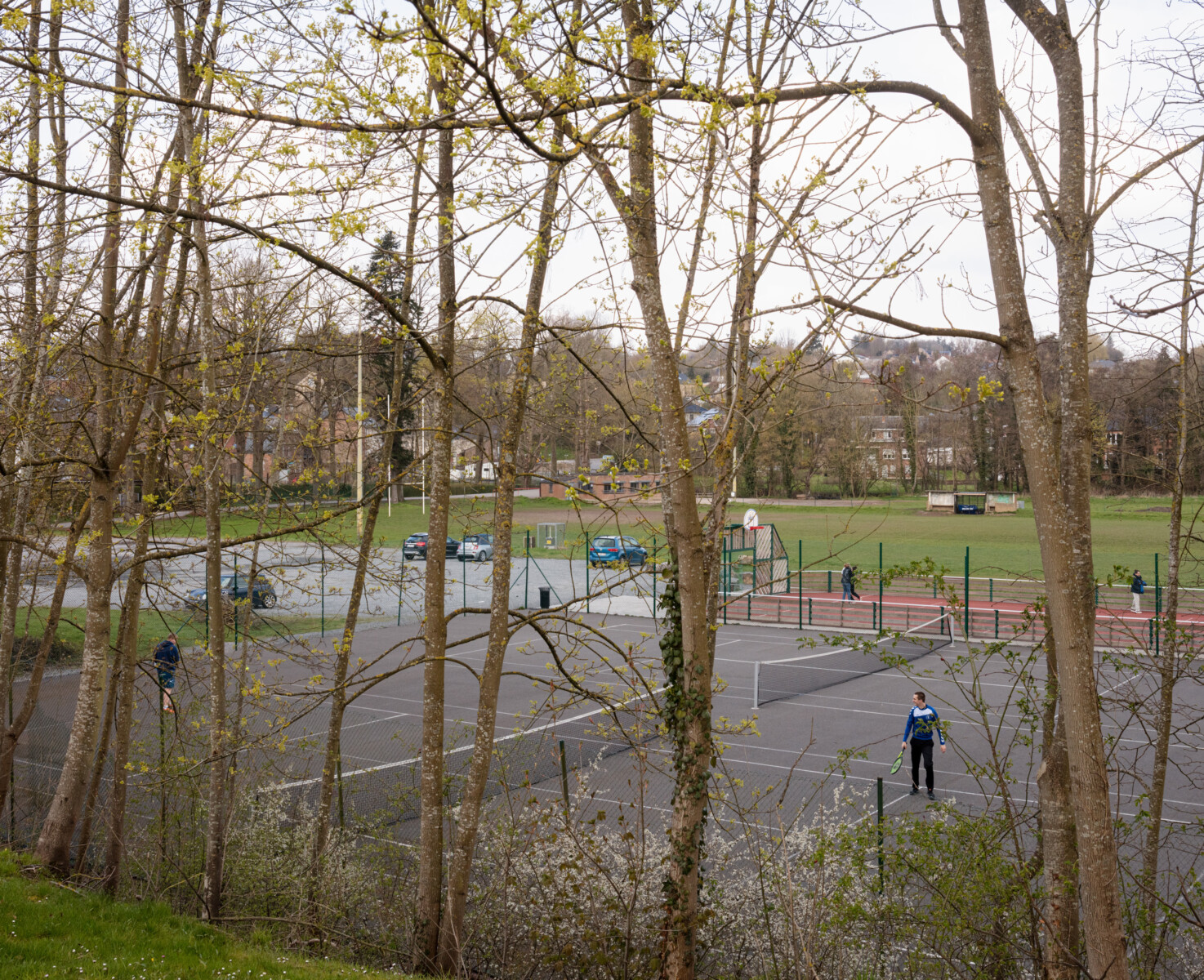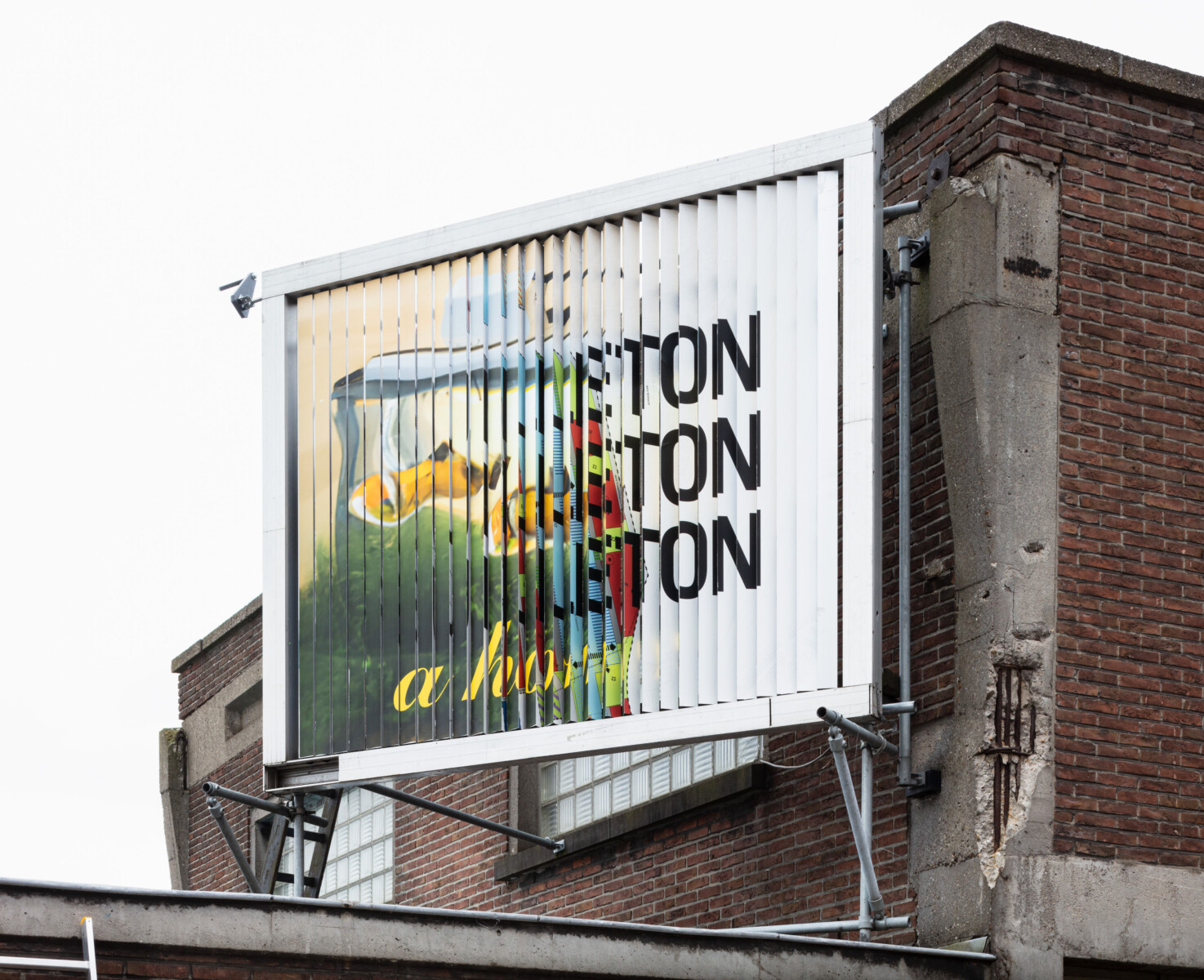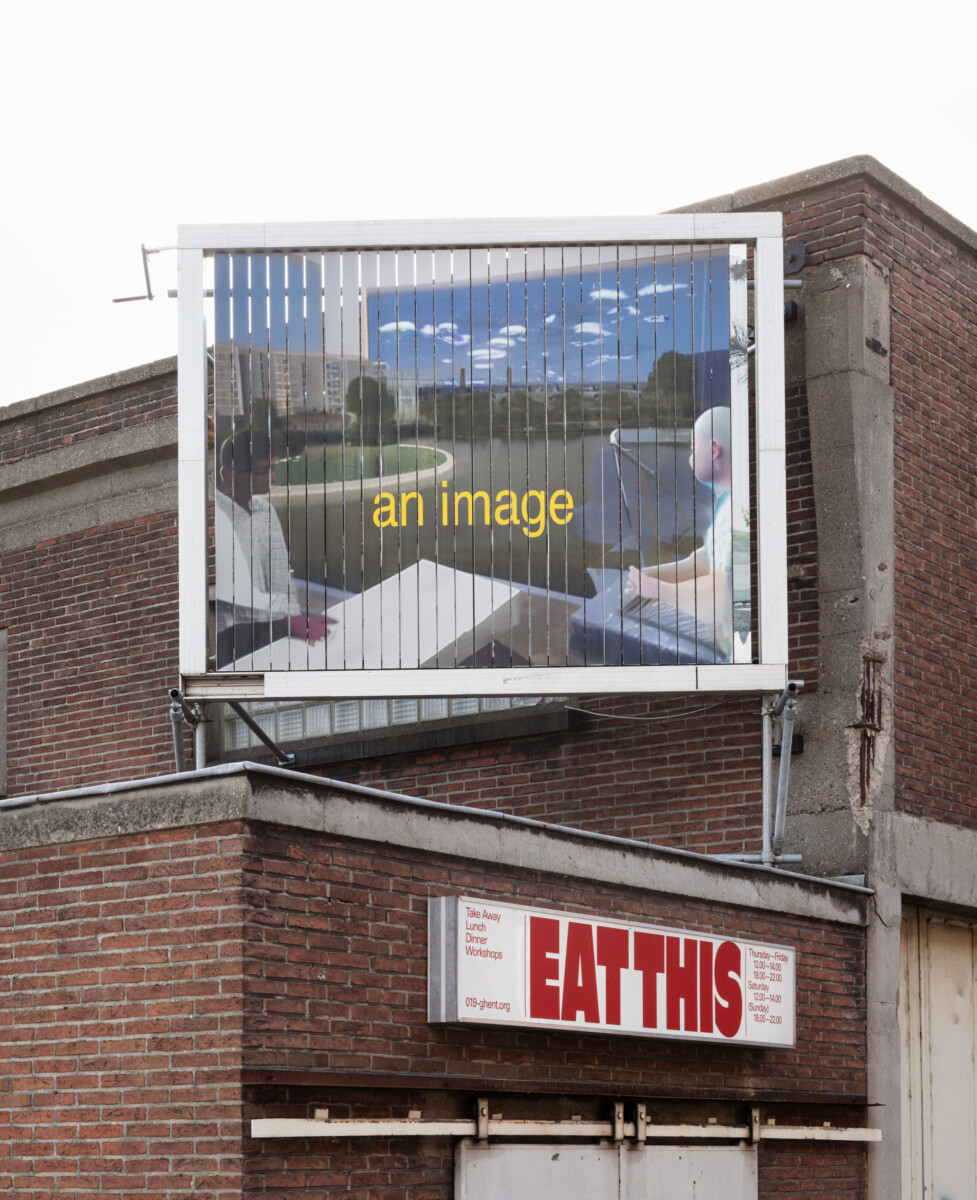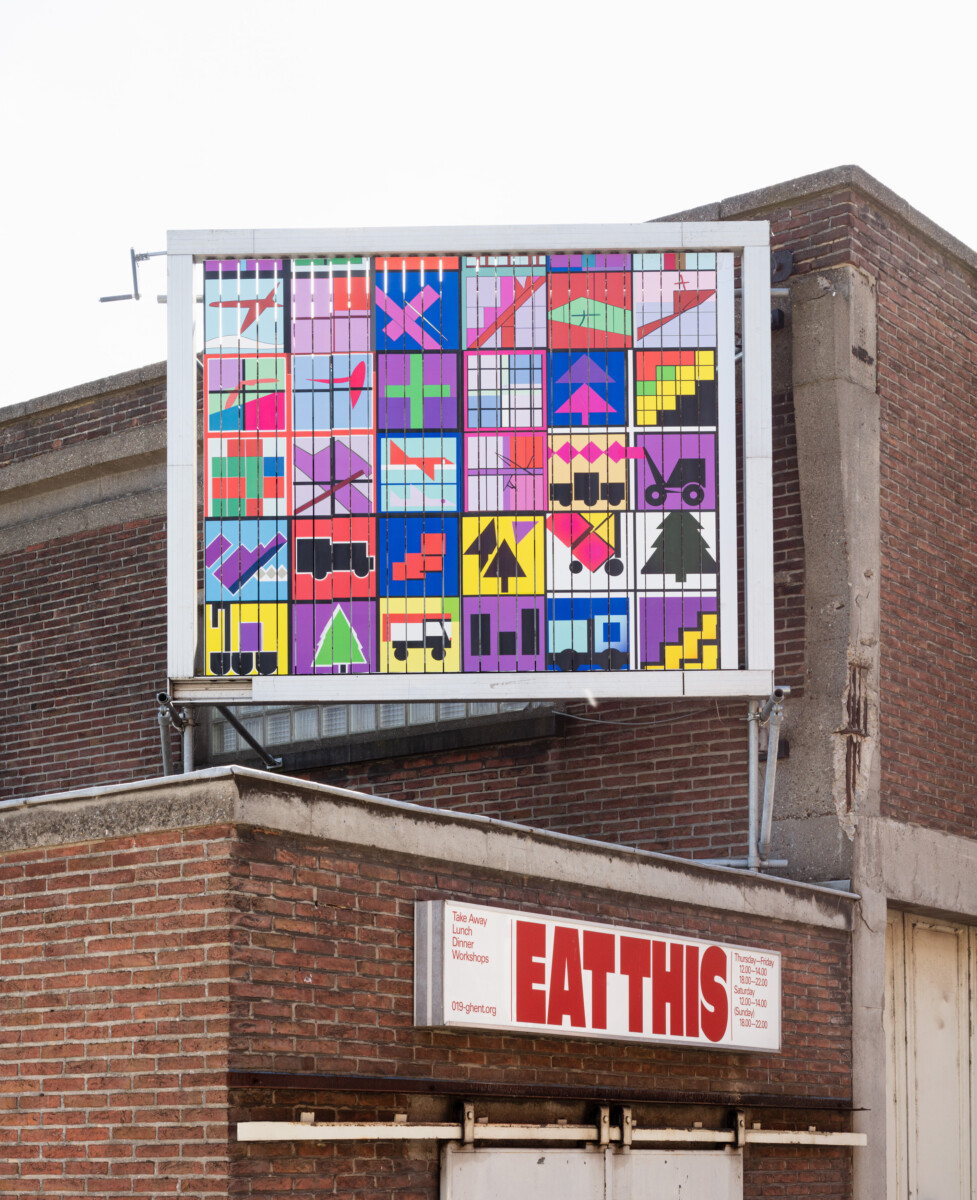As a young footballer of Eendracht De Haan positions himself for a free kick, a TELERAD sensor of the Federal Agency for Nuclear Control measures a radiation level of 0.10 µSv/h. In the background the Nieuwe Steenweg. Cars are parked in front of a single house with a white gate. The black alders and hazels in the foreground have been pruned recently.
The manual opens on pages 17 and 18. There is no text, only photographic images. In a flash, it becomes clear what belongs where, in what order it should be done and what hand to use.
There is a traffic jam on the R40 towards the Dampoort. A truck driver looks at a rotating advertising panel on the roof of a former welding factory. He is seeing the three images and messages for the fourth time. They seem to have something to do with each other in a strange way, and they don't seem to want to sell anything at all. His concrete mixer is empty. He just poured nine cubic metres of concrete into the foundation of the Verapaz bridge.
On Instructing Photography delves into the productive interplay between photography and procedures (instructions, constraints, or both). The research focuses on procedures as an artistic principle and explores them in the context of landscape: a recurring theme in On Instructing Photography.
On Instructing Photography is a practice-based and critical research project. It gathers three case studies:
- TELERAD explores how documentary landscape photography operates under stringent instructions and restrictions. We conduct research into something invisible, boundless and above all hypothetical in a landscape: radioactive radiation. TELERAD is a network of more than 250 monitoring stations spread across the Belgian territory. That network offers an unusual cross-section of the physical, contemporary Belgian landscape.
- In LANDSCAPING, A PERFECT MANUAL, we explore how photography itself can be instrumental and instructional. Instructional photography is supposed to be hyper-functional and unambiguous. It is not about visual or conceptual excellence, but about an instrumental nature of the image. This case reveals the tension between the playful and the serious, and between a clear constraint and the unpredictable result of its application.
- In FEUILLETON, we explore how strict procedures can lead to unexpected results, collaborations and insights within photography education. Working from a site-specific context, we address the tension between photography and public space. Students create a visual story for a billboard, relying on strict procedures.
On Instructing Photography places itself at the intersection of documentary photography, essay and literary studies. The research project engages in an intensive collaboration with students.
